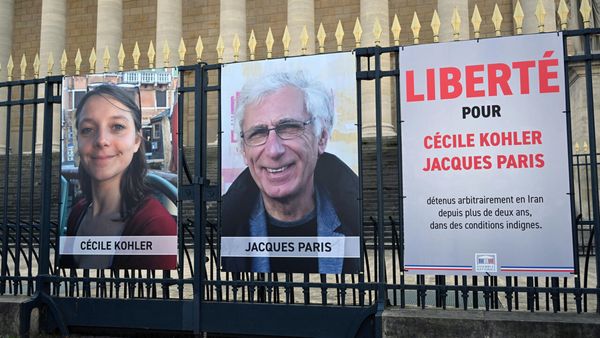
Daniel Browning is a keen observer of emerging visual arts talent in Australia. As a widely published critic and long-time presenter of Radio National’s The Art Show, it is his job to be.
In 2015 he came across a small collection of photo transfer paintings by the Japanese-born artist Miho Watanabe. He’d been casually strolling through the studios at UNSW’s School of Art and Design with a faculty-member friend, and was struck by three untitled images depicting a watch, a necktie and a pearl ring. More than just striking examples of an interesting technique, the images reflected Browning’s own state of mind at the time.
“Miho’s work just really took my eye. I saw these experiments she was doing into this diaphanous space between perception and reality. I had a sense that there was something wistful and sad about them, which spoke powerfully about loss.”

Struggling through a personal experience of grief, Browning says it’s no surprise he was drawn to the works. He immediately asked his friend to help him get in touch with Watanabe, to acquire them.
Browning says he wasn’t looking for “extraordinary talent” (though he believes Watanabe’s work exhibits just that), but for something that spoke to him.
“I was looking for something serene and mournful and quiet, there was something about these pieces that cancelled all the other noise. What I heard was a lonely whisper. These paintings had that tone I was searching for.”
Speaking with Watanabe, Browning learned that the artist had also been through a recent loss. The paintings’ subjects were what is known in Japanese culture as katami: possessions imbued with the energy of their former owner.
“They came to me precisely as what they were, reminders of the dead.”
In a meta sense, Browning says the works themselves now hold the energy of his own loss.
“When I bought them I didn’t know they would become emblematic of something else. I just gravitated towards them because they expressed that kind of mournfulness that was in my life.”

A lifelong renter, Browning says the paintings don’t always make it on to the wall, but their presence in his life remains significant.
Whether on display or not, Browning says just having the paintings in his life conjures an “accepting relief” of life’s seasons, and reminds him of the “indivisibility of the past and present”.
As a Bundjalung and Kullilli man, Browning says the works also resonate with his own cultural sensibilities around what he calls “the contemporaneity of the past”. He evokes the opening lines of Oodgeroo Noonuccal’s poem The Past: “Let no one say the past is dead. The past is all about us and within.”
“They are markers of the endless flow of life. This too will pass, everything that is happy, sad, or otherwise. It’s all endless flow around the objects which take on all of those stories.”
Daniel Browning’s new book Close to the Subject is out now from Magabala Books







